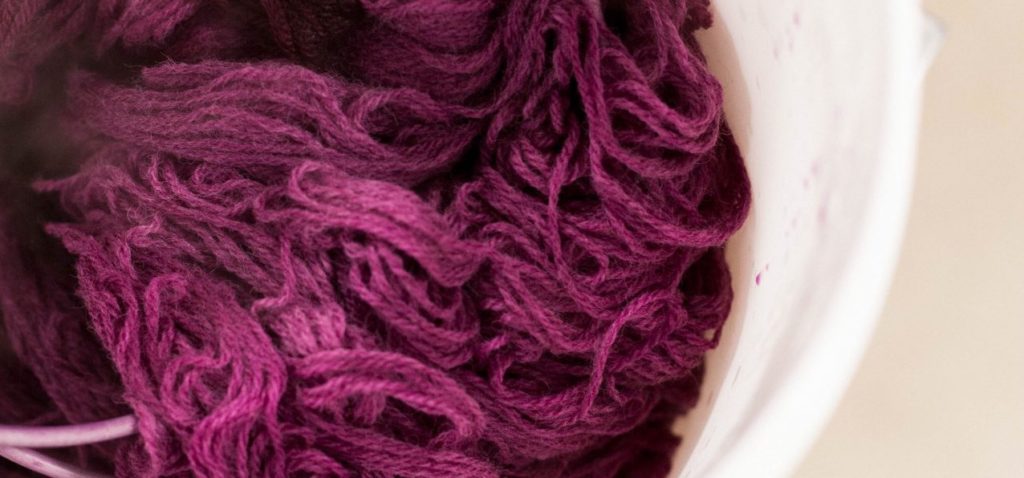
We get lots of emails from customers about challenges with dyeing and needing Botanical Colors’ President Kathy Hattori’s help. Why not share the learning so we can all benefit? From our inboxes to you, it’s simple: You Asked, Kathy Answered. Email questions@botanicalcolors.com with your plea for help!
YOU ASKED: Thank you so much for all your wonderful information about plant dyes. I was wondering if I have to heat up wool yarn in the logwood dye bath? Is the heating process necessary to protect the lightfast properties or to achieve a deeper color? If I would like to use the same dye pot for different shades of purple can I take out the wool for the lighter shades before the heating process?
KATHY ANSWERED: This can be possible, but I’ve found that removing skeins after a short time in the dye bath sometimes causes the color to be less stable and it shifts and fades. If I dye for the recommended dye time with the recommended heat, then that seems to give me the best results.
If you are trying to achieve a gradation of a color, meaning light purple to medium to dark to darkest purple, you might try a different technique. Briefly, you dye all skeins the lightest shade and once that is done, you separate the skeins you want light and using the same dye pot, add more dye and return the skeins that you want darker. Once those are dyed for 45 minutes, you separate the skeins you want to keep medium, add more dye and return the final skeins to the dye pot to achieve the darkest shade. Of course, you can create as many gradation steps as you desire, and it does take a bit of math and patience, but the results are superior to putting everything into a dark dye pot and trying to gauge the various shades.
Logwood by itself is not super lightfast, so we try to give it all the help we can with proper mordanting and dyeing. Heat seems to benefit mordanted wool yarn with logwood and it is key to achieve a darker color. Dyeing for the recommended time also helps the dyestuff bond with the mordanted fiber, so pulling skeins out before its properly heated may cause unintended consequences with colors running or fading.
